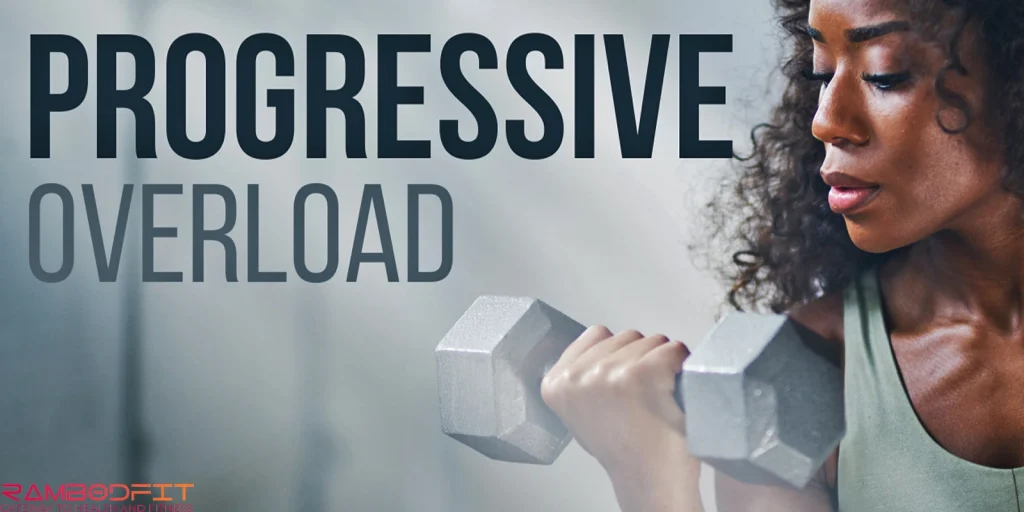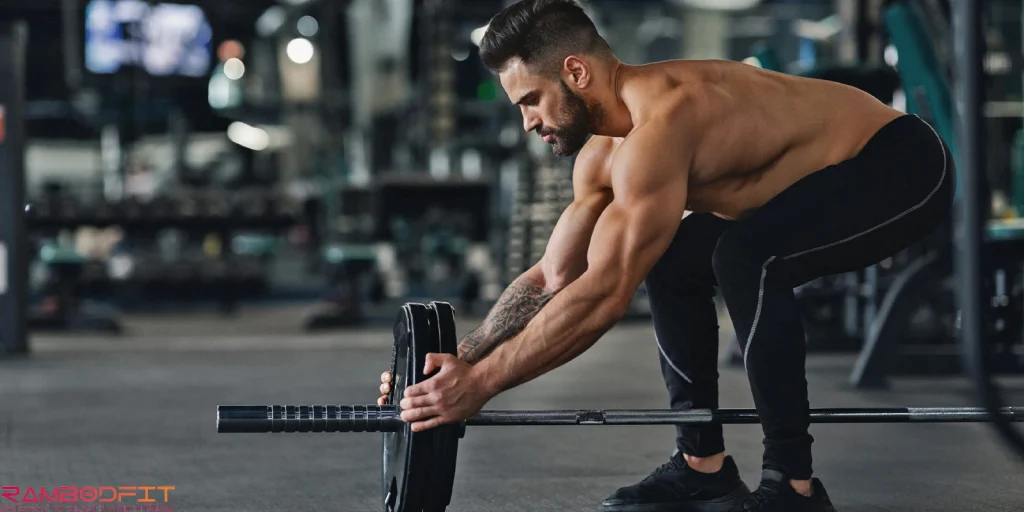


Let’s be real: progressive overload is the only way you’re gonna get anywhere with muscle or strength. No one’s arguing that. It’s the backbone—the secret sauce—behind every program that actually works for progressive overload muscle growth. The thing is, it sounds dead simple: just do more over time.
But when you actually hit the gym and try to put it into practice, that’s where most people trip up. So, what the heck is progressive overload, and which is the move—increase the weight, or squeeze out more reps? It’s all key to effective progressive overload muscle growth.
Story time. In the early days, I was that dude piling on plates every session like I was auditioning for World’s Strongest Man. More weight, better gains, right? Except… nope. Eventually, I slammed into a brick wall: progress stalled, my technique went out the window, and, of course, I ended up nursing some dumb injury or just plain pissed off. Fun times.
Here’s the twist: accidentally, I started upping my reps instead, especially when my elbows or shoulders felt like crap. And, shocker, my muscles actually responded. Sometimes, more reps did way more for me than just chasing heavier weights. Turns out, progressive overload muscle growth isn’t a strict recipe. It’s messy. It’s personal. It’s about listening to your body and not just mindlessly adding weight because some bro on TikTok said so.
So here’s the deal: I’ll walk you through what progressive overload really means, dig into the whole reps-vs-weight debate (spoiler: it’s not as black and white as people make it), and help you figure out what’ll actually work for your body and goals—whether you’re just getting started or you’ve been lifting long enough to have opinions about knee sleeves. Here’s Rambodfit, so let’s dive into science and experience.
Table of Contents

Alright, so here’s the deal with progressive overload—it’s basically just a fancy way of saying you gotta keep pushing your muscles harder if you actually want them to get bigger and stronger. The body’s wild, right? It just doesn’t sit back and let stuff happen.
Toss it a challenge, like heavier weights or more reps, and your muscles are like, “Okay, bet,” and start rebuilding themselves tougher than before. This is the foundation of progressive overload muscle growth.
So, what’s actually going on inside your body? How’s all this magic happening on a physiological level? Let’s pull back the curtain…
Alright, so here’s the deal: when you hit the weights, you’re basically wrecking your muscles on a microscopic level—yep, little tears all over. Sounds kinda brutal, but honestly, that’s the magic sauce for getting stronger. Your body’s no slouch; while you’re chilling or shoving carbs in your face, it’s busy patching up those fibers, making ‘em chunkier and more badass than before.
That’s what folks call hypertrophy, by the way. Picture it like this: you’re beefing up a frayed rope by weaving in more strands, so it doesn’t snap next time you go full beast mode. This process is a core part of progressive overload muscle growth.
Getting stronger isn’t just about flexing bigger biceps—your nervous system’s actually doing a ton of heavy lifting. At the start, most of those strength gains? Yeah, they’re your brain and spinal cord figuring out how to fire up your muscles smarter, not harder. Basically, your body learns to get more out of what it’s already got. So, you might notice yourself lifting heavier weights, but don’t expect to bulk up right away. It’s more about getting your “wiring” right before you start packing on the muscle. Wild, right? Progressive overload muscle growth relies heavily on these neural adaptations early on.
Alright, so here’s the deal—mechanotransduction might sound like a word a robot would spit out, but it’s actually super important if you care about muscles getting bigger. Basically, when you put your muscles under some kind of tension (think deadlifts, push-ups, or even just lugging groceries), your body goes, “Whoa, something’s happening!” and flips a switch inside your muscle cells.
That switch? It blasts out signals that kickstart muscle repair and growth. Doesn’t really matter if you’re cranking out heavy sets with a barbell or doing a million reps with baby weights—your muscles’ little sensors (mechanoreceptors, if you want to get nerdy about it) feel the stress and shout, “Time to grow, folks!” That’s the real magic behind getting swole and critical for progressive overload muscle growth.
My Experience With Overload
Man, I remember being stuck with my bench press for what felt like forever. I’d go to the gym, stare at the bar, and think, “Why am I not getting any stronger?” So, instead of just trying to slap on more plates and failing miserably, I switched it up—started cranking out more reps with a weight that didn’t make me wanna explode.
And, weirdly enough, my endurance shot up. When I finally went back to the heavy stuff, boom, my strength had actually jumped. Wild, right? Turns out, getting stronger isn’t just about grinding through the heaviest weights possible. There are more ways to skin that cat. This personal insight helped me understand progressive overload muscle growth better.
When applying progressive overload, two primary variables dominate the conversation:
Cranking out more reps basically means you’re sticking with the same weight but squeezing out extra repetitions. So, say you’re benching 100 pounds—maybe you get 8 reps one week, then you grind out 10 the next. Boom, you’ve just ramped up the total work your muscles have to suffer through (and trust me, they notice). This method plays a huge role in progressive overload muscle growth.
You’ll catch this approach a lot with stuff like:
• Drop sets—kick things off heavy, then keep dropping the weight so you can keep repping even after your muscles are screaming “uncle.”
• Rest-pause sets—sneak in a quick breather mid-set, then go right back for more reps after you probably should’ve quit.
Honestly, this kind of training is all about making your muscles work overtime. It’s a solid way to build up endurance and chase that muscle growth, mostly by drowning your muscles in metabolic stress. Not always fun, but hey, no one said gains came easy.
Alright, so here’s the deal: you wanna get stronger? You gotta put more weight on the bar, plain and simple. Don’t mess around with endless reps—keep it tight, maybe 8 at 100 pounds, then next session? Crank it up to 105 for the same 8 reps. That’s how you push your muscles to their breaking point (in a good way, not like “I can’t get off the floor” bad). Progressive overload muscle growth depends heavily on this intensity overload.
Why bother with this? Well, for starters, your muscles start calling in the big guns—more muscle fibers join the party. Your brain and body get better at working together, too. And, obviously, you get stronger. Like, “help your friends move a couch and not die” strong.
You crank up the reps, your muscles start screaming, you get that crazy pump—feels like your skin’s about to burst, right? That’s the metabolic stress talking. Good for making your muscles look juicy and teaching them some endurance, but, honestly, you might not get much stronger. Now, swap that for heavier weights with fewer reps, and yeah, you get stronger, no question. It’s all about raw tension and making your nervous system work overtime. Downside? Sometimes your joints start yelling at you before your muscles do, especially if you slack off on volume.
I’ve played around with both. When I go high-rep, light weight, I walk out of the gym with arms feeling like balloons—but my lifts don’t really go up. Go heavy, low-rep, and suddenly I’m stacking plates, but my elbows are like, “Bro, chill.” It’s a trade-off. There’s no free lunch when it comes to progressive overload muscle growth.

Alright, here’s the deal: there’s no magic bullet—just cranking out more reps or piling on heavier weights won’t make you Hercules overnight. It all boils down to what you’re chasing. Wanna get swole? Or just looking to bench more than your annoying gym rival? Your goals, how long you’ve been at this, and honestly, how you’re structuring your workouts—yeah, all that goofy “periodization” stuff—totally shape what you should do. Science backs it, and honestly, so does anyone who’s spent more than five minutes in a gym dedicated to progressive overload muscle growth.
But here’s the kicker: once you start looking a little more like Thor and less like Steve Rogers, you gotta keep things spicy. Add weight, try more sets, whatever—just don’t let your muscles get lazy.
Oh, and there’s this study (Schoenfeld et al., 2015, if you wanna sound smart at parties) that found whether you’re lifting heavy for a few reps or light for a ton, as long as you’re pushing to that “I can’t do another rep or I’ll explode” point, you’re golden for growth. Fatigue is the real MVP in progressive overload muscle growth.
On a personal note, I did a 12-week run chasing the pump—cranked my reps up before adding more plates. Not gonna lie, the muscle pump felt awesome, and when I finally went heavier? My strength shot up, and my shirts got tighter in all the right ways. Worth it.
Here’s the deal: your body adapts to whatever you throw at it. Want to get better at lifting heavy stuff? Surprise, surprise… You gotta lift heavy stuff. No shortcuts here, sorry.
Honestly, when I focused on those brutal singles, doubles, and triples, my one-rep max shot up way faster than with those endless high-rep sets. But, man, it takes a toll—you need longer breaks between sets, and you can’t just wing it or your body’s gonna rebel. Burnout city if you push too hard without a plan. This approach is vital for progressive overload muscle growth at the strength end.
Honestly, if you’re just getting started in the gym, piling on the plates right away is a recipe for disaster (or, you know, a pulled something-or-other). I always tell folks to chill with the heavy stuff at first—focus on getting those reps in and nailing the movement. Your brain and your joints? They need some time to catch up before you try to impress anyone.
I’ve walked a ton of newbies through this—think bodyweight squats, maybe some light dumbbells, just enough to get the blood pumping and the technique sharp. Once you’re not wobbling all over the place and you can bang out clean reps without hating life, that’s when we start talking about adding actual weight. Confidence and stamina first, then we get heavy. That’s the move for effective progressive overload muscle growth.
Once you’ve been grinding in the gym for a while, the game changes. Chasing those newbie gains? That’s ancient history. At some point, you gotta start stacking more weight if you want to keep making progress—your muscles get stubborn, you know? Still, tossing in some high-rep sets here and there is a lifesaver for your joints and kinda keeps things fresh, stops you from hitting a wall.
Honestly, speaking from my own time under the bar, the best groove I ever found was bouncing between heavy, low-rep cycles and then lighter phases with more reps. Keeps the body guessing, sidesteps those annoying plateaus, and, let’s be real, your elbows will thank you later. No one wants to be that guy with tendonitis by 40. This balance is key to sustainable progressive overload muscle growth.
Okay, so here’s the real scoop: progressive overload? Yeah, it’s way more than just tossing on extra plates or cranking out more reps. That’s just the tip of the iceberg, honestly. There are all these sneaky little factors that most people just breeze right past—rest time is a big one.
Rest between sets? Mega underrated. Seriously, how long you chill out makes a massive difference. If you’re gunning for muscle growth (hypertrophy, if you wanna get fancy), you wanna keep those breaks short—like 30 to 90 seconds. That’s when you get that burning, “my muscles are on fire” vibe. But if you’re hunting for pure, brute strength? Give yourself 2 to 5 minutes. No shame in catching your breath and letting your body recharge—actually, that’s how you crank out those big lifts.
This rest interval strategy is crucial for maximizing progressive overload muscle growth. I’ve played around with this a ton in my own workouts. Shorter breaks, I’m sweating buckets and moving fast, squeezing in more work. Longer rests, suddenly I’m benching like a beast. So yeah, don’t sleep on rest intervals—they’re kind of a game changer, depending on what you’re after
Look, if you want bigger muscles, it’s not just about how heavy you can go—seriously, you don’t need to turn every set into a strongman competition. Volume, meaning the total work you crank out, actually plays a massive role. Sometimes, just adding another set or two with a weight that doesn’t make you see stars will do way more for your gains than constantly chasing new PRs.
Oh, and it’s not just gym bro legend—there’s real science behind it. That Schoenfeld study from 2019? Yeah, it backed up what any veteran lifter could’ve told you over a beer: more volume usually means more muscle. Simple as that, and central to progressive overload muscle growth.
Dragging out your reps or just straight-up pausing mid-lift? That cranks up the heat on your muscles big time, no extra plates needed. Honestly, it’s a game-changer if your joints are screaming “nope” to heavier weights.
I sneak in these slow-mo, time-under-tension sessions when I’m dialing things back, like during deload weeks or bouncing back from an injury. Keeps the muscles working without totally roasting my joints, which is a smart approach to progressive overload muscle growth.
Honestly, if you keep doing the same workout forever, your muscles are gonna get bored—and so are you. Mix up your exercises or tweak your reps from time to time; it keeps your body guessing and your brain from checking out. That whole “periodization” thing? Basically, it’s just a fancy way of saying, “Let’s not do the same stuff every week for months on end.” Trust me, if you wanna keep making gains and not lose your mind, you gotta switch things up on the regular to maximize progressive overload muscle growth.
Alright, so if you actually wanna get somewhere with progressive overload (and not just spin your wheels hoping for muscle fairy dust), here’s what’s worked for me—and, yeah, science agrees:
• Write your stuff down. Seriously. I don’t care if it’s an app, a crusty notebook, or the back of a napkin—track your lifts, your reps, even how wrecked you feel. Otherwise, you’re just guessing.
• Chase more reps before you chase heavier weights. Like, if your sweet spot is 8-12 reps, stick with the same weight and fight your way up to 12. Then you add weight and start at 8 again. Rinse, repeat. Trust.
• Don’t make huge jumps. Nobody’s out here adding 20 pounds every week except in their dreams. Bump it up a tiny bit—like 2.5%. Slow and steady wins the slow race.
• Never get sloppy. I mean it. If your form turns to trash just to eke out another rep or slap some extra weight on, you’re just begging for a one-way ticket to Snap City. Not worth it.
• Chill sometimes. Plan in some lighter weeks—deloads, whatever you wanna call ‘em. Bodies need a breather, or you’ll burn out faster than a cheap candle.
• Play with your rest. Going for size? Rest less. Chasing pure strength? Take your sweet time between sets. It matters.
Honestly, don’t overcomplicate it. Keep grinding, make tiny tweaks, and your future self will thank you. Maybe even with a better bench press. All of this adds up to solid progressive overload muscle growth.

Look, everyone yaps about “progressive overload” like it’s some mystical gym hack, but honestly, it’s just the backbone of getting swole or strong. Still, it’s not as basic as “just add more plates every time you walk in.” Nah, it’s way more nuanced than that. You gotta read the room—or, well, your body.
Whether you’re some newbie benching the bar or you’ve already got chalk in your car and a squat butt to match, the trick is juggling reps, weight, rest, even how long you torture your muscles on each set. It’s like being your own mad scientist, except the experiment is your biceps.
Real talk: the best progress I’ve seen (and science backs this up, so it’s not just gym bro lore) comes from actually paying attention to what your body’s screaming at you. Mix things up, don’t get stuck in a rut, and don’t be an idiot about recovery. Your muscles won’t thank you if you treat them like a punching bag 24/7.
So, yeah, progressive overload muscle growth’s less about mindless grinding and more about having an ongoing argument with your own body. Push it, let it recover, then do it again—just a little smarter each time. And hey, don’t forget to flex in the mirror once in a while. Celebrate the little wins.
Reference and Further Studies
• Schoenfeld BJ. The mechanisms of muscle hypertrophy and their application to resistance training. J Strength Cond Res. 2010;24(10):2857–2872. PubMed
• Grgic J, Schoenfeld BJ, et al. Effects of resistance training frequency on measures of muscle hypertrophy: A systematic review and meta-analysis. Sports Med. 2018;48(5):1207-1220. PubMed
Yeah, possible. As long as you’re pushing yourself close to the point where your muscles are screaming, “Nope, we’re done!”—that’s where the magic happens. Light weights can burn like hell if you go near failure. Still, if you want to get stronger and not just pumped, you’ll probably want to toss in some heavier lifting now and then. Variety’s the spice, right? Progressive overload for muscle growth can happen through multiple strategies.
Rest matters—a lot more than some folks think. If you keep breaks short, like under a minute or so, your muscles get that deep, burning pump and metabolic stress, which is great for muscle building. But if you chill out for a few minutes (
like, 2-5 minutes), you’ll have way more juice to push heavier weights, and that’s gold for strength. Depends on your vibe: chasing the pump or chasing the PRs. This is crucial for maximizing progressive overload muscle growth.
Here’s a simple trick: let’s say you’re aiming for 8-12 reps. Once you can bang out 12 without turning into a sweaty puddle, it’s time to toss a bit more weight on. Drop the reps back down and work your way up again. Rinse and repeat. It’s like leveling up in a game—don’t overthink it. This cycle drives progressive overload muscle growth.